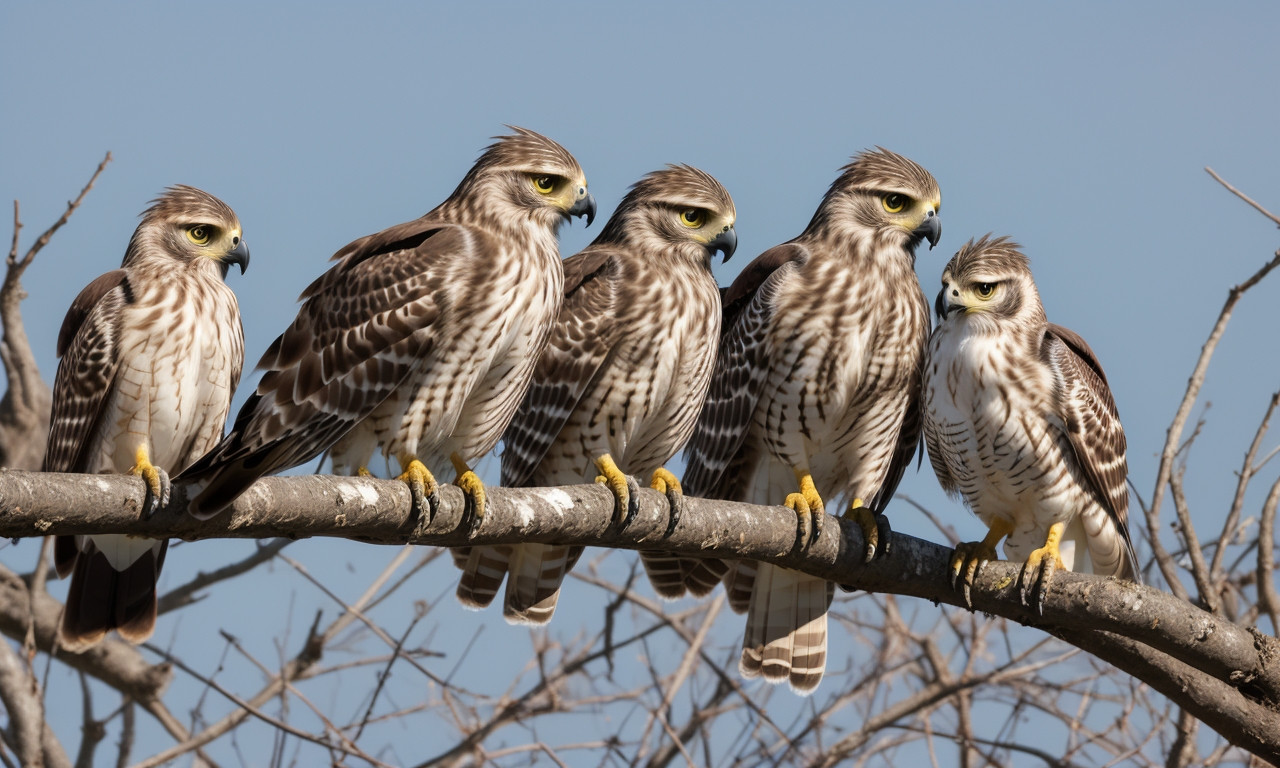Wisconsin, the Badger State, is a region woven with dense forests, sprawling farmlands, and a multitude of waterways. These landscapes serve as an idyllic backdrop for the life and dance of some of nature’s most formidable avian predators—hawks. These sky predators are not just emblematic of the wild spirit and rugged charm of Wisconsin; they embody the majesty and grace of birds of prey in their daily quest for survival. In this journey through the heavens of Wisconsin, we will unveil the lives, behaviors, and habitats of these remarkable birds, shedding light on their crucial role in the ecosystem.
A Glimpse into the World of Wisconsin’s Hawks
Wisconsin is home to several species of hawks, each uniquely adapted to its environment. Whether you’re an avid birdwatcher or someone who appreciates the intricate balance of nature, understanding these raptors’ characteristics can greatly enhance your outdoor experience in the state.
The Diverse Species of Hawks in Wisconsin
The Red-Tailed Hawk: Sovereign of the Skies
The Red-Tailed Hawk is perhaps the most iconic of all Wisconsin hawks. Characterized by its brick-colored tail and piercing eyes, it can often be seen perched atop trees and poles or soaring in wide circles high above open fields.
Related article; hawks in south carolina
- Habitat: These raptors favor open areas with high vantage points.
- Diet: Their diet primarily consists of small mammals like rodents.
- Identification: Look for the telltale russet tail and a powerful build.
The Cooper’s Hawk: The Agile Pursuer
Another notable species is the Cooper’s Hawk, a woodland raptor unparalleled in its pursuit of other birds, its main prey. The Cooper’s Hawk’s short, rounded wings and long tail make it well-suited for navigating dense foliage.
Related article; ducks in florida
- Habitat: Prefers forested areas and is increasingly spotted in suburban regions.
- Diet: Feasts mostly on smaller birds, showcasing remarkable agility in flight.
- Identification: Recognizable by its steely blue-gray back and banded tail.
The Rough-Legged Hawk: Winter’s Visitor
The Rough-Legged Hawk, a visitor from the Arctic during Wisconsin’s colder months, stands out with its bulky figure and feathered legs.
Related article; hawks in georgia
- Habitat: This raptor is typically found in open country during its winter migration.
- Diet: Opportunistic in feeding habits, it preys upon rodents and carrion.
- Identification: Has various morphs but often displays a distinctive black, white, and brown plumage pattern.
Understanding Hawk Behaviors
Hawk behaviors in Wisconsin are a complex symphony of survival strategies deeply tied to the seasons and the availability of prey.
Related article; michigan woodpeckers
- Migratory Patterns: Many hawks, such as the Broad-Winged Hawk, partake in long migratory journeys, painting the skies during the seasonal shifts. The spectacle is especially remarkable during the fall migration.
- Nesting Habits: Hawk pairs are often monogamous, with fascinating courtship displays and a strong affinity for their nesting sites, which they fiercely protect.
- Hunting Techniques: Each hawk species has a preferred hunting method, from the Red-Tailed Hawk’s high soaring and pounce to the Sharp-Shinned Hawk’s swift and stealthy strikes from forest cover.
The Habitats and Ecosystems Supporting Wisconsin’s Hawks
The diversity of habitats in Wisconsin is rich and varied, offering ideal conditions for different hawk species to thrive. From the open farmlands to the northern boreal forests, these environments shape the lives of the hawks and, in turn, are impacted by their winged guardians.
Related article; Do Crows Talk? Here’s Everything You Need To Know
The Role of Hawks in the Ecosystem
Hawks play a critical role in maintaining ecological balance. As apex predators, they help control the populations of rodents and other small animals, ensuring a healthy turnover and preventing overpopulation and disease outbreaks.
Conservation Efforts and Human Impact
The relationship between hawks and humans in Wisconsin is multifaceted. While conservation measures have led to the recovery of many raptor populations, human activities continue to threaten their habitats through deforestation and urban sprawl. It’s our collective responsibility to ensure that these majestic birds continue to grace the Wisconsin skies.
Related article; Of The Prettiest And Most Beautiful Birds In The World
Spotting Hawks in Wisconsin: Tips and Tricks
Birdwatching is a pastime that connects people to the natural world. Spotting a hawk in the wild can be a thrilling experience. Here are some seasoned tips to help you on your quest:
- Best Times to Observe: Early morning or late afternoon are prime hawk-watching times, as these birds are most active during these parts of the day.
- Optimal Locations: Public lands like Horicon Marsh and the Mississippi River areas are noted hotspots for hawk sightings.
- Equipment to Enhance Your Experience: A good pair of binoculars and a wildlife guidebook can greatly enrich your birdwatching experience.
Conclusion: Embracing the Presence of Hawks
As the day wanes and the sky turns a molten gold, Wisconsin’s hawks can be seen etching their paths against the twilight. These raptors are not only integral to the ecological tapestry of the Badger State, but they are also a source of inspiration and awe for those who witness their aerial prowess.
Related article; Fascinating Woodpeckers in Louisiana
By fostering a deeper understanding and appreciation of these sky predators, we not only enrich our own experiences with nature but also contribute to the preservation of these magnificent creatures for future generations to marvel at and learn from.
Related article; Stunning Arctic Birds and Seabirds You Must See
In conclusion, the hawks of Wisconsin are a testament to the beauty and resilience of the natural world. Their presence is a constant reminder of the wild that still thrives amongst us, often hidden but always vital. As we look up to the skies, we become witnesses to the age-old dance between predator and prey—a dance that continues to captivate and intrigue both the casual observer and the dedicated ornithologist alike.




